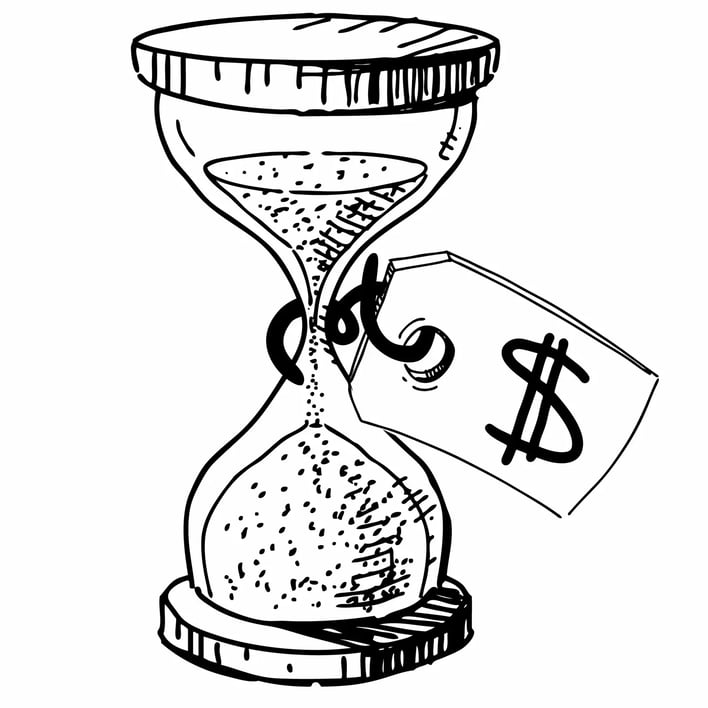4 min read
Criteria for Survival When Selecting an Environmental Consultant
![]() Transect Team
:
Jun 28, 2022
Transect Team
:
Jun 28, 2022
.webp)
Listen to the audio version
If we could jack into the Matrix, upload all available information on a potential wind or solar site into our brains, and make lightning-fast development decisions … well, obviously, we would. And it would rule.
Unhappily, we are not in the Matrix. Or at least, we hope we aren’t. Because while human batteries might have the potential to fight global warming, we are not about to let that robot takeover life. On the other hand, we are all about environmental planning, quickly and efficiently identifying and breaking ground on land development sites, especially those that entail producing green energy.
Except environmental due diligence is not an easy thing to do, you’re thinking. About as easy as stopping the Hundred Years’ War, and we don’t even have all them horses and armor.
First, may we just say you are a true student of history. Second, it might surprise you how not-hard it can be to complete the environmental permitting process. Environmental management isn’t a perfect science.
No yeah, really. We said “easy,” and we meant it. If you select the right environmental consultant, backed by the right technology, you can skip the line and stop waiting for your environmental Critical Issues Analysis report all damn day. (LOL, as if it’s a day. Try all damn month.)
How does it work? Have a seat, grab a coffee and let us tell you. Or, if you’re impatient, just skip to the white paper.
Environmental Consulting: Bringing Projects to a Standstill for More Than 50 Years!
Okay, that heading makes project standstills look like a good thing. We now see we could have phrased it better.
The thing is, environmental compliance is a good thing. It helps you avoid a massive environmental impact that could derail your projects down the road. It ensures we respect wildlife corridors, waterways, air quality concerns, wetlands, and tribal lands. A proper environmental site assessment minimizes the chances that you might choose A “dumb site” that lacks adequate access to utility lines and grids and completely annoys your stakeholders- all excellent outcomes.
Not so great: how endlessly, hair-tearingly long it takes to get through the broken environmental due diligence process. Seriously, so long. Enough time to take up laughter, yoga, crocheting, and professional Pepto consumption to manage all that stress. You could also throw in an online French pastry course, depending on the job type.
Why the geriatric timelines? Theoretically, environmental consultants – the gatekeepers of the permitting process – have to do a lot of manual work to provide you with these environmental services. You know all the long hours digging up pertinent reports, analyses, and applicable regulations for any project site. Implementing these processes to drag out billable hours is a full-time job (well, it is when you’re scrambling to find said billable hours). Not that they’re giving you any ETAs, mind you. Most of the time, you sit around in the dark, waiting for a No or Maybe on sites you’ve identified.
Mostly no's, btw. Of all project sites identified as possibilities for any wind, solar or other energy installation, only about 10 percent make it to completion.
Depressed? Rightfully so.
When it comes to what can go wrong on a project, that is merely the tip of the iceberg. Most land development endeavors are unwitting Titanics headed toward destruction at some phase of the project – sometimes when you’re already very invested. (In, you know, music and dancing. Trying to keep this Titanic metaphor alive.)
The good news is, it doesn’t have to be that way.
Comprehensive Criteria When Selecting an Environmental Consultant
Look, environmental consultants usually aren’t in the game for you. Possibly they’re in it to help the environment. Often, they’re just in it for themselves. As former environmental consultants with years of experience in the game, it pains us to say this about our colleagues, but it’s true. The game is definitely rigged. We aren’t saying these experts dream of becoming biologists or geologists to delay your project. Still, the current system demands they know how to dance around to find billable work just as much as it requires their technical expertise.
But alas! We said there was good news, though, and we meant it. You don’t have to work with those folks and play the game their way. With the proper criteria, you can find the right consultants, the ones who will believe in fast turnarounds and fair dealing.
Sadly, those criteria aren’t always obvious. Even when you are cautious in your choices, it’s challenging to dig deep enough without a comprehensive checklist. We’ve got you there.
In this white paper, you’ll find multiple assets, all free. These include:- A complete list of how environmental consultants take advantage and what to do about it
- That comprehensive list of criteria you need when selecting an environmental consultant
- A downloadable and printable checklist of those criteria
- Thorough overviews of how this process should work and how you can be a part of the solution

Sneak Peek: Where Environmental Due Diligence Goes Wrong and How to Fix It
Are you wondering what exactly you’ll get in the white paper? Here’s a sneak peek.
How Development Projects Go Wrong
First, we take the time to outline every way projects go wrong and how your environmental consulting firm might be taking advantage of you. Here are just a few ways:
1. Requiring that you pay for a bid is a major red flag.
2. Poo-pooing environmental regulations works against you and ecology … booooo.
3. You’ve tried … and tried …, and you really can’t understand what service these guys provide.
Any of the above should be your signal to run far, far away. Like, yesterday. On the other hand …
Criteria to Locate the Right Consultants
How can you tell who’s legit? Here’s a small sampling of questions to ask:
1. Do they give free advice? They sure should!
2. Are they part of an engineering shop? Bundling isn’t always a good thing.
3. Are they the lowest bidder? Some suspicion is recommended.
Those are just three examples of the dozens we offer in the white paper, including a downloadable checklist you can use when interviewing consultants to help you through the environmental due diligence and permitting process.
Oh, and did we mention you can skip the in-person, manual environmental due diligence process altogether and opt instead for bank-ready environmental reports in minutes? Yep, and we will give you all the deets on that as well. Download the white paper now to find out more!

